ROSbot - autonomous robot platform
Open source & connected universal robot platform. ROS-powered. Sensors: LIDAR, camera, IMU, encoders, distance sensors. 4 DC motors.
Open source & connected universal robot platform. ROS-powered. Sensors: LIDAR, camera, IMU, encoders, distance sensors. 4 DC motors.
To make the experience fit your profile, pick a username and tell us what interests you.
We found and based on your interests.
ROSbot_CORE2_STL.zipSTL files of ROSbot chassisx-zip-compressed - 520.99 kB - 05/19/2017 at 09:58 |
|
|
ROSbot_assembly_instruction.pdfAssembly instruction for ROSbotAdobe Portable Document Format - 6.50 MB - 05/15/2017 at 14:37 |
|
|
We have also created technical specification for ROSbot: https://husarion.com/core2/manuals/rosbot-manual/ . Find more details about our project here.

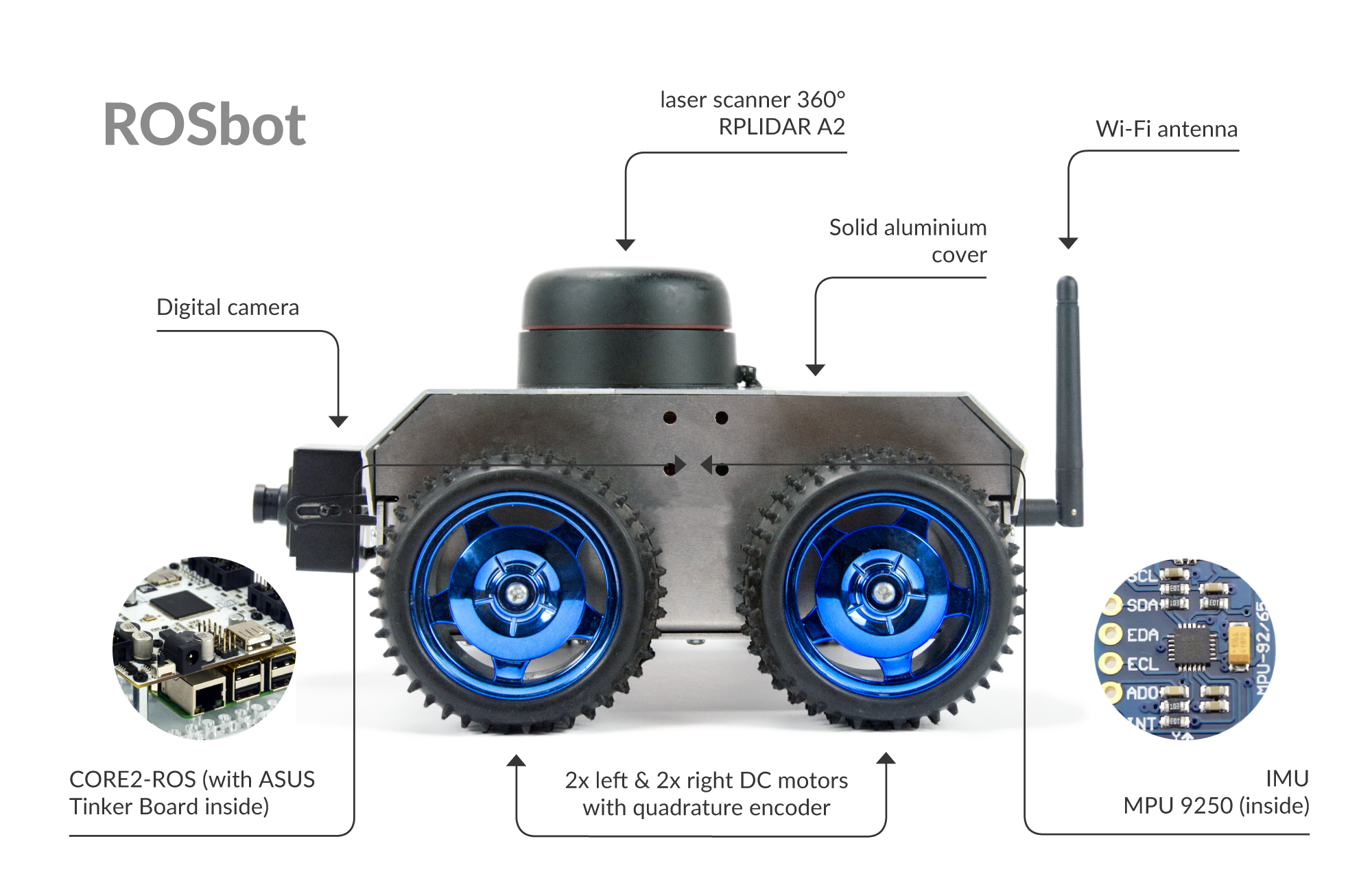
Lastly, ROSbot received a paint job! See the new and improved ROSbot below:
Check out more at https://www.crowdsupply.com/husarion/core2
Take a look at a short video presenting ROSbot in action:
We've also created 2 new ROS tutorials. Now there are 8 lectures to help you get familiar with a set of software tools that powers modern robots:
We prepared the picture that explains a bit more about the new, rear panel:
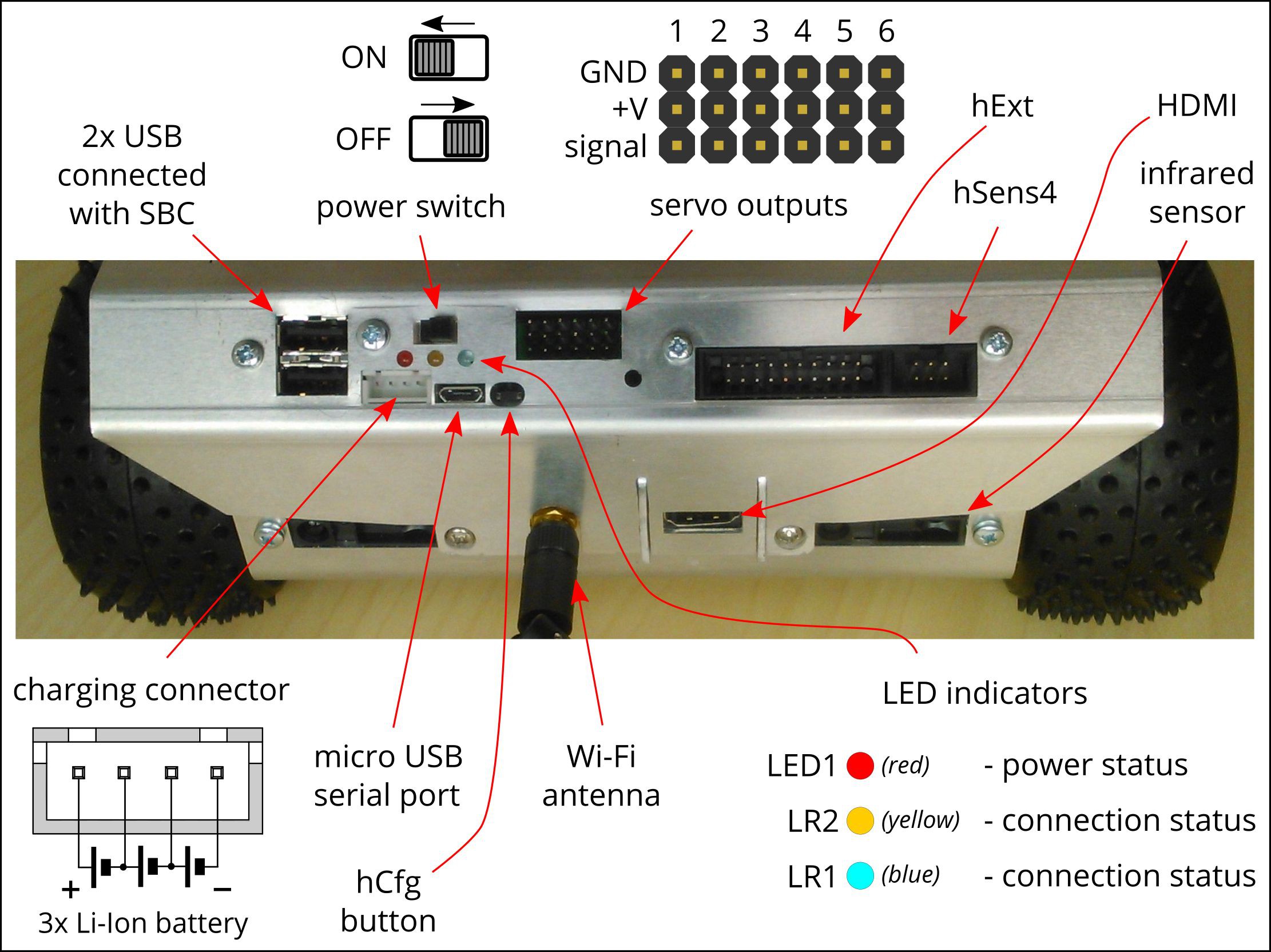
Two of USB ports of SBC (ASUS Tinker Board) are occupied by LiDAR and the camera. The other two are available on the rear panel which you can use to connect a Kinect, a keyboard or a mouse. Connect an HDMI screen and you can start debugging directly on ROSbot which comes with preinstalled Linux operating system. You can also connect an LTE modem if you like.
The servo outputs, hExt and hSens4 ports are described in our documentation which you can find here: https://husarion.com/core2/hardware/ .
It's very important not to draw energy from Li-Ion battery under critical voltage level - it can cause a significant decrease of battery life. The firmware is constantly checking the battery level. If voltage level is too low, LED1 are blinking, motors are stopped and user is notified that it's time for charging.
We also decided to have RP-SMA connector for the external antenna, rather than connecting a Wi-Fi dongle. ASUS Tinker Board uses I-PEX MHF4 antenna connector, which is even smaller than much more popular u.FL. Watch out not to damage the 0.8mm RF cable that fits in MHF4 plug. We have protected the cable with two layers of heat shrink tube and stiffen the cable in the way that guarantees that the MHF4 connector will not be pulled out by accident.
We are introducing ROS tutorials for ROSbot. The first 6 lessons are available here https://husarion.com/core2/tutorials/ros-tutorials/1-ros-introduction .
Covered topics are:
Check it out!
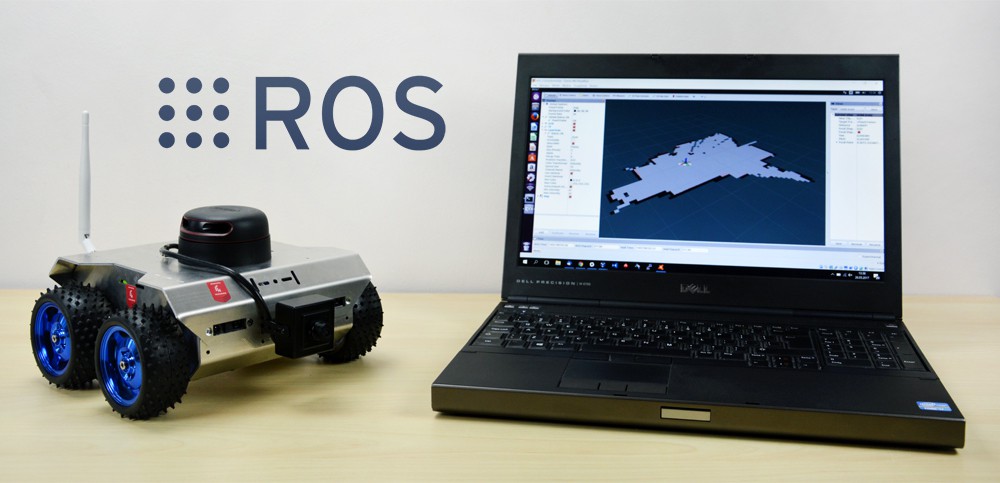
Here is the list of improvements made in ROSbot 2.0 - autonomous robot development platform:
1) unused ports from CORE2-ROS are now accessible on ROSbot chassis, so you can add the external modules to your ROSbot thanks to:
2) LiDAR and camera cables are hidden inside chassis
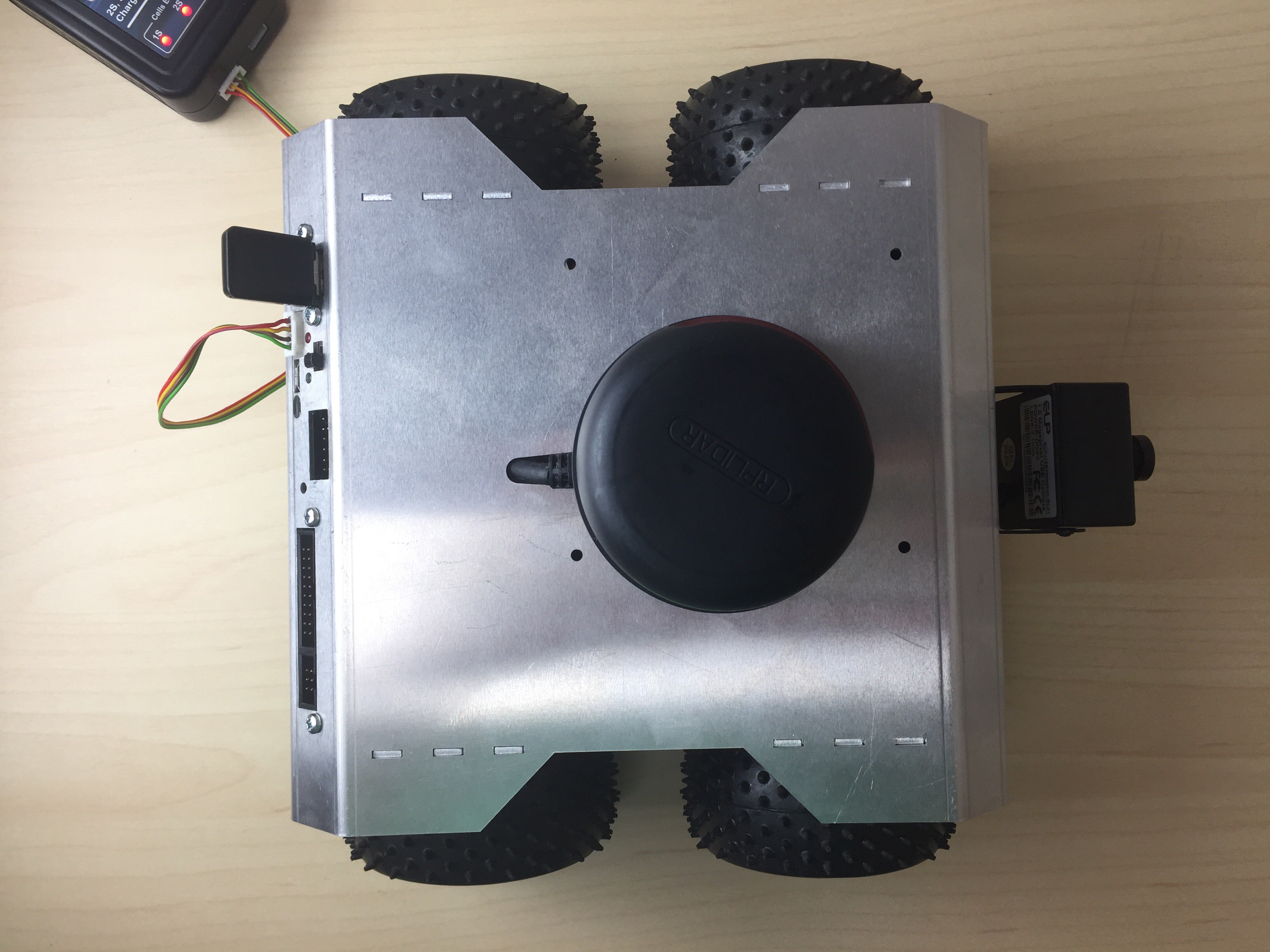
Because the charger connector and unused ports are accessible from the ROSbot chassis you don't need to remove the cover to charge Li-Ion batteries or add your own modules. To make it possible, we designed this additional adapter board:
ROSbot is a nice alternative to Turtlebot if you want to learn more about ROS, experiment with robot swarms or make your own autonomous robots. We hope ROSbot - autonomous robot development platform for hackers - will be a base for your new robotic projects.
At first we tried the ready to use, 4WD robot-chassis that you can find by name "C300 intelligent car chassis" ;)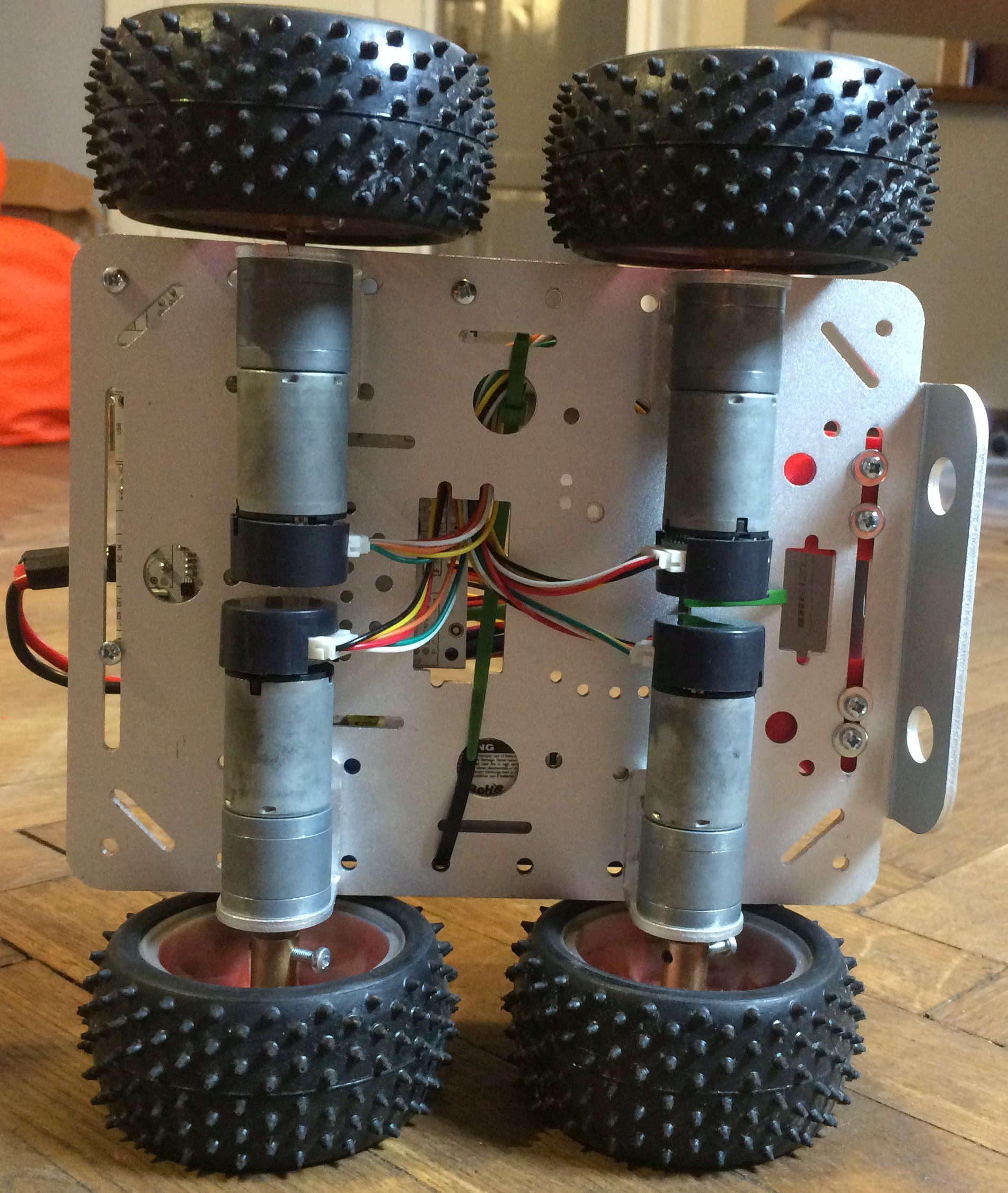
Buying a similar chassis is a good way to get a platform with pretty good motors with encoders. It's even cheaper than ordering the motors themselves in popular robotic stores. We installed all parts - CORE2 controller with Raspberry Pi 2, battery pack (3x18650 Li-Ion), a camera, ultrasonic distance sensor and finally a LIDAR. It was working well but not looking well because of not sufficient space on platform and ugly wiring. Oh, I don't even want to show this here.
The next idea was "we have a 3D-printer!". The plan was to use the same chassis but with the 3D-printed body covering all the mess, with only LIDAR exposed at the top. This is what the designer drew:
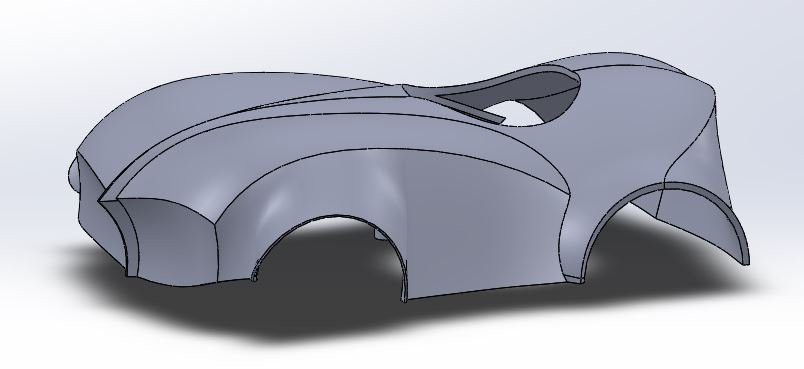
how the engineer brought this project down to earth:
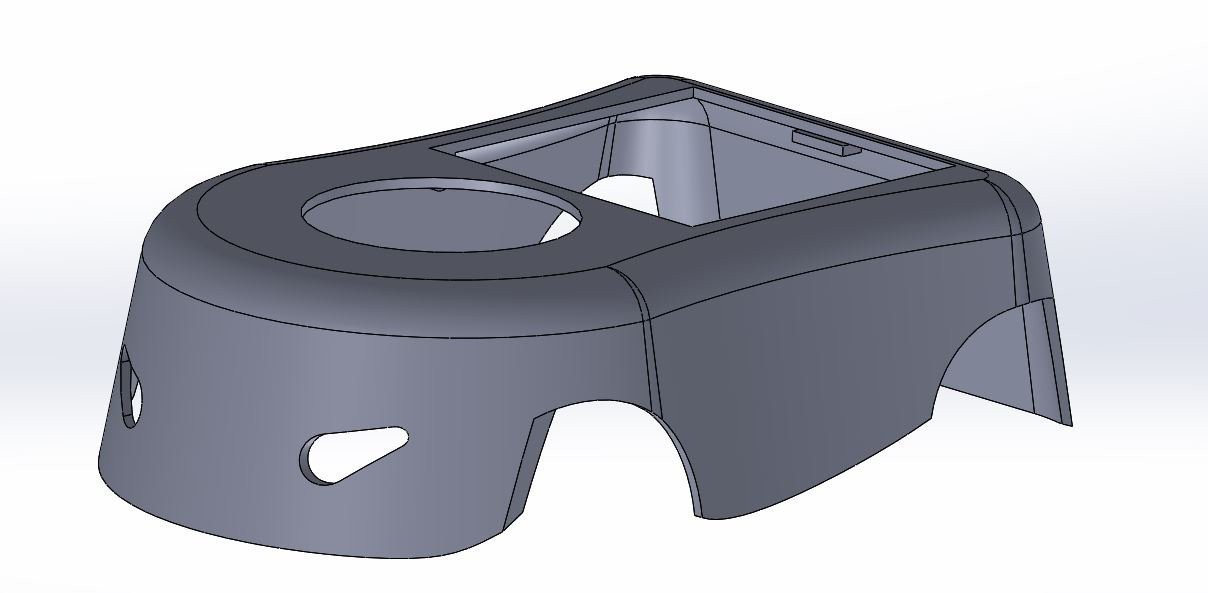
and how it looked like when we finally made it:

We noticed that 3D-printed body is nice but not very durable and not easy to modify when we want to add anything to our platform. And the 3D-printed body needs a lot of work with grinding, spackling and painting, and if we wanted to make the second piece of robot, it would probably look differently. That's why we've ordered the metal chassis, laser-cutted out of aluminium. This is the result:

I've placed more photos in the gallery. We made a few mistakes and we needed to use a file to "move" some holes. And we are going to make a new version with the additional panel for connectors, because some interfaces (HDMI, USB Serial, LED's, hCfg button etc.) need to be accesible from the outside. This is the good topic for the next log :)
Create an account to leave a comment. Already have an account? Log In.
In the previous post I promised the update of the documentation. It was updated a long time ago. It is high time to add a link. The current documentation for ROSbot is here: https://husarion.com/manuals/rosbot-manual/#rosbot-manual-docs-and-links
What are the dimensions of the ROSbot? More generally, is there a brochure available with technical specs? Thanks a lot!
Dimensions are 230 x 260 x 135mm (W x L x H). Documentation will be updated in the next week and published on Husarion webpage.
ROSbot can be bought here: https://www.crowdsupply.com/husarion/core2
Hi, very very cool project. Especially the Husarion Core is quite impressive. Is it possible to order the complete Rosbot (either pre-assembled or not) somewhere ?
Hi, I'm happy that you like it! Yes, you can pre-order both Husarion CORE2 and ROSbot here: https://www.crowdsupply.com/husarion/core2 .
Nice project, what I do not understand is why you add four IR distance sensors while having a superior rplidar mounted.
Hi, thank you! This is an open source platform that can be used with a ROS tutorial that we will introduce in the following weeks. RPLIDAR is quite expensive, so IR distance sensors are nice alternative (but of course LiDAR is much, much better). Moreover IR sensors are below the level of LiDAR so they can detect some of the obstacles invisible for LiDAR.
aah ok. I just would have used sonars instead since both IR react allergic to glas/mirrors, sonars do have different weak spots.
Saw a link to the tutorial you posted on ROS discourse. Did a quick read over, looks good and clear so far. +1 Point for verbosity.
Become a member to follow this project and never miss any updates
I am a beginner. I have to download your project from github, what command to run this robot in terminal?